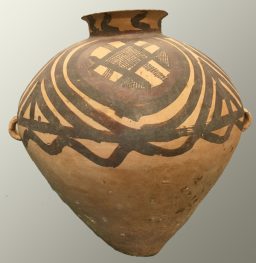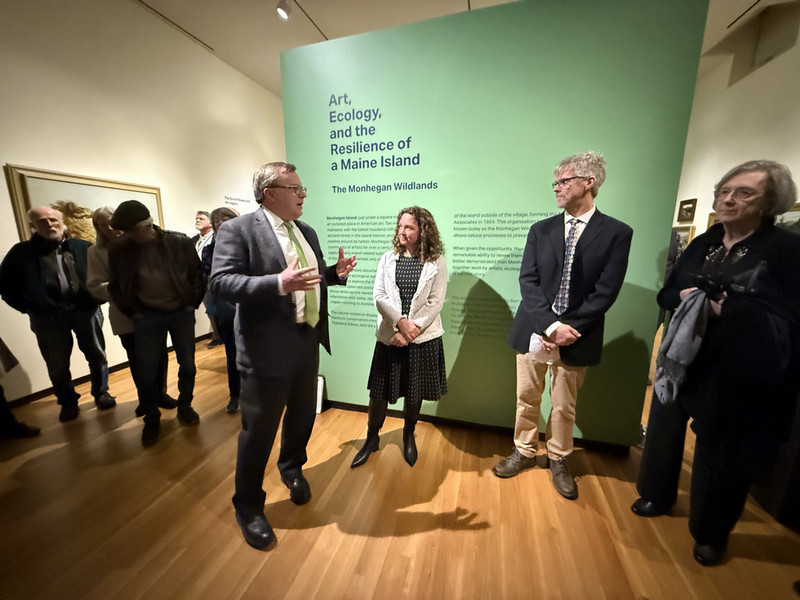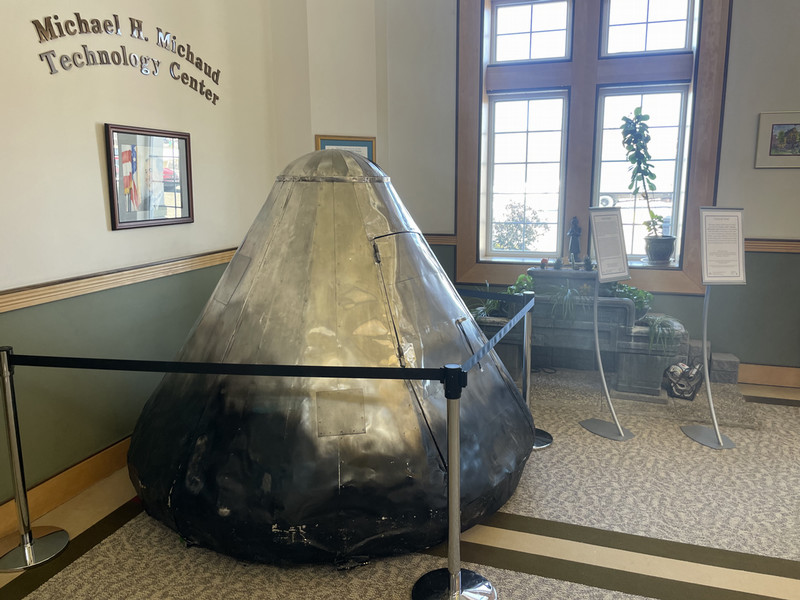Museum of Art Acquires 5,000-Year-Old Chinese Vessel
By Bowdoin College Museum of Art
The Museum of Art is excited to announce its acquisition of a Neolithic Chinese guan, or jar, generously gifted to the Museum by George and Elaine Keyes in honor of Barry Mills. After conducting thermoluminescence testing though the Williamstown Conservation Center and the Oxford Authenticity Center in England, the Museum established the date of this object to be between 3000 BCE and 2500 BCE, placing it within the Majiayao Culture (ca. 3300–2000 BCE) of Neolithic northwest China. This 5,000 year-old ceramic vessel is now the oldest object in the Museum’s collections.
The Maijayao Culture is divided into three phases. Stylistically, this example of ancient Chinese ceramics falls within the second period, known as the Banshan phase. Most vessels from this period were made by stacking coils of clay on top of a small, flat, circular base, increasing the circumference of the coils slightly to create the belly of the vessel’s body, and then slowly decreasing in size to create the jar’s narrow neck. The resulting balloon, or ovoid, shape appears to be almost defying gravity, accentuating the technical accomplishment of the makers of the period. The exterior surface of the vessel was flattened to create the smooth texture of the walls and then fired. Created before the Bronze Age and the invention of metal, this vessel will permit conversations about the influences and trajectory of forms, ornamentation, and object functions in China’s long and renowned tradition of ceramic and bronze vessel production.
The slightly elongated oblong shape, and the bi-colored painted decoration in black and deep red are characteristics of the Banshan style. Geometric and abstract designs applied to the top two-thirds of the vessel by brush are common in this period, with some ceramics depicting anthropomorphic or zoomorphic figures. This specific vessel includes delicate cross-hatching detail, as well as looser and bolder brushwork lines. The brushwork on this vessel demonstrates experimentation not only with color and form, but with a variety of line weights and application techniques. Many motifs used in the painted decoration of Neolithic ceramic vessels were maintained in the production of bronze vessels.
Belonging to an agricultural society along the Wei River and the Yellow River, this vessel was most likely used as a storage jar and was possibly included in a burial. Like many excavations of tombs or burial grounds, the quality, the type, and the number of objects kept within often can reveal the social or economic status of the deceased individual.
The acquisition of this object allows the Museum to tell the history of Chinese art more completely. Offering numerous avenues of scholarly research, the Museum is excited to share this vessel with faculty and students.



